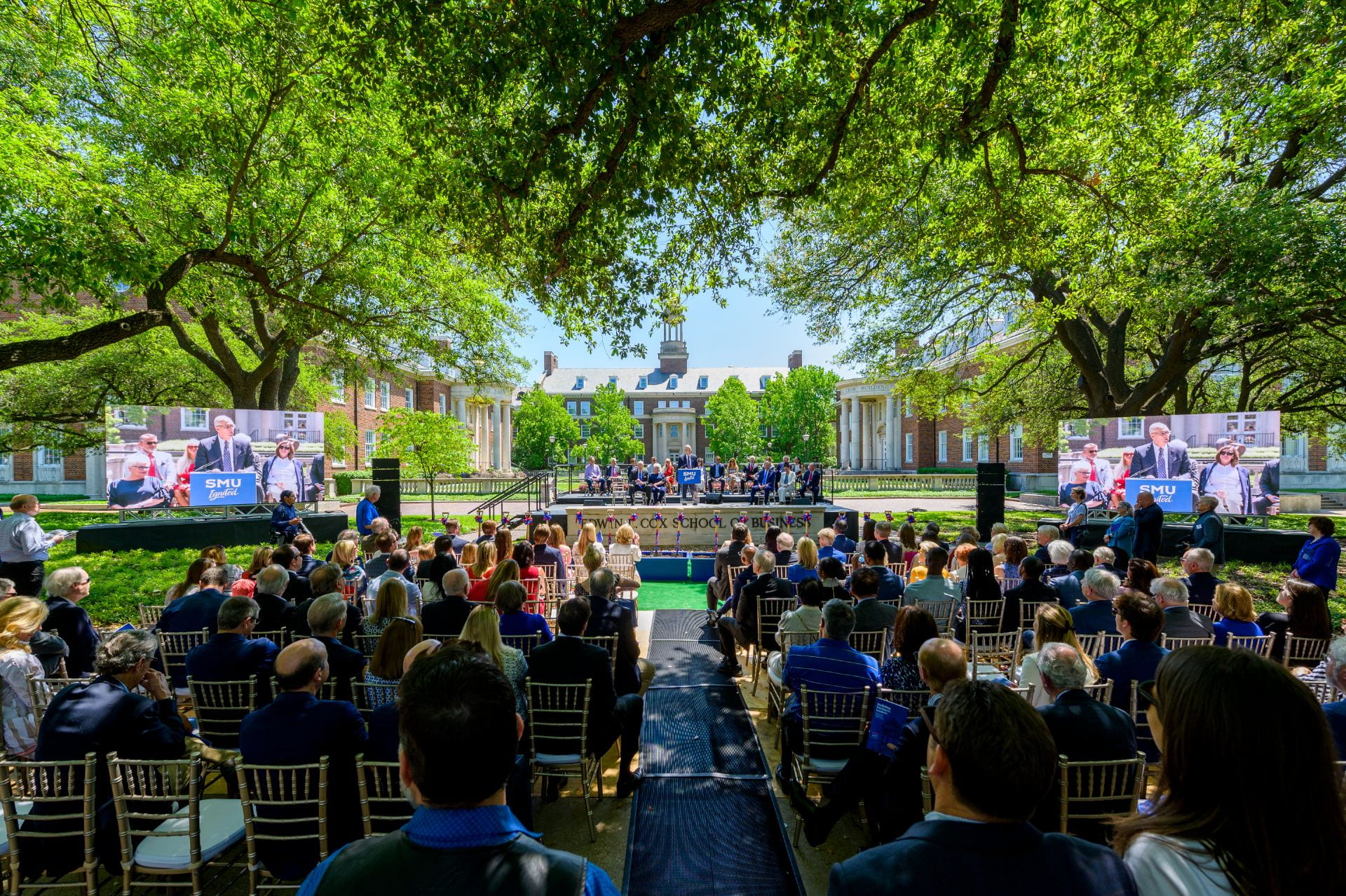When the new David B. Miller Business Quadrangle welcomes students this August, faculty at the Cox School of Business will have access to some of the most advanced studio and technological upgrades in business education. But how will these tools be integrated into the learning experience?
Among the first faculty members to teach online at Cox in 2019, Associate Professor of Management Maribeth Kuenzi, Merriman Family Foundation Endowed Professor in Economic Growth and Leadership Development and Niemi Center for Economic Growth and Leadership Development Director; and Professor of Marketing Edward Fox, W.R. & Judy Howell Director of the JCPenney Center for Retail Excellence, Corrigan Research Professor and marketing department chair, are looking forward to how new classroom technology will enhance their teaching capabilities.
We sat down with them to find out more about what learning will look like in the technologically enhanced Cox School of Business. (Responses have been edited for brevity and clarity.)

Associate Professor of Management Maribeth Kuenzi

Professor of Marketing Edward Fox
Was there a moment you realized the potential of these new classroom technologies?
Maribeth Kuenzi: I think I realized right up front that things were going to be really different. I had to create materials more individualized to reach students in different places. I had to create special videos because I wanted to apply the course material in class rather than lecture to students. So I kind of flipped the classroom. Before, I mixed lectures and discussions in the classroom. I took all of [the lectures] and put them online so students could read and watch them before they came to class. Then I designed my class so everything in the classroom was experiential, where students practice using what they learned.
Edward Fox: My epiphany happened after I had agreed to build out the first course in the sequence of our online MBA program. I had a fundamental understanding of how this was different than the way I had taught previously, and in a lot of ways, I had to figure out what I was teaching. What was better for the student to tackle on their own at their own pace? How could we help them learn without the pressure of what the other students were doing and me trying to pace the material? How do I do this in a way that serves the student? Rethinking my teaching with the use of technology really allowed me to fundamentally change the way I teach.
Which of the new technologies are you most excited about?
MK: Probably the one I’m most excited about—and will use the most—is a dedicated room for us to create new videos. The new room will allow me to go in and modify a video very quickly and post it so the course material will be more current. And then we’re going to have dedicated classrooms where we’ll have better sound, better cameras and better lighting. I tend to like to move when I teach, and when I teach online right now, I’m sitting. Now we’ll have cameras that can track us, so that allows me to be more engaged and animated when teaching.
EF: I find it really useful for students to witness what others are doing. I want everybody to be able to share their screen and show their work. I was helping students learn how to program last night, and one of the great new capabilities I have is to tell them, “OK, your code isn’t working, show your screen.” And then we talk through it, and everybody witnesses the process of discovery, or debugging, in this case. The other big piece is microphones in the classrooms to pick up discussions, which is crucial for hybrid teachers.
How have these new capabilities affected how you teach?
EF: To me, the integration of advanced technology and the flipping of the classroom allows me to facilitate learning in the time that we have together—this synchronous time when the cameras are on and I’m with them. Rather than doing an hour of lecturing, they have a series of videos that they can consume— they’re cut well and there’s really good post- production. They can do that when I’m not there. And when we’re together, I can facilitate the learning and the discovery. That’s me being a coach and a facilitator, more than a lecturer, and ultimately, that’s the value of integrating technology into the classroom.
How do you see this integration affecting how students learn?
MK: Most of my classes are fairly interactive. But right now, when you’re in a classroom, the seats are immovable. In the cluster classrooms we’re going to have in the new building, everything is movable. Students can actually turn the chairs around and do a team exercise when they have an activity that requires them to work together. Right now, it’s hard to do that in the classrooms we have, so I’m going to be able to do more involved exercises and better scenarios to help students apply the material they’re learning.
What advice would you give to other faculty members looking to integrate some of these new capabilities into their teaching?
MK: I think the most obvious elephant in the room is, when we get new technologies, for instance, like when newspapers went online, they just kind of took a picture of it and put it online. It wasn’t interactive, and it wasn’t using the technology to improve the reading experience. And I think that a lot of people try to take their in-person class, and just copy it online. You have to really create a new class. The main concepts are the same, but how you present them, how you engage students and how you create situations for the students to interact are going to be very different.
EF: For me, it’s to take a clear-eyed view of your content and break it into these pieces. What do we need to do together? And what would the students be better served to do individually at their own pace? And it depends. For case-based courses and strategy courses, I think more of that needs to be done in a synchronous or collaborative classroom. And you can’t just lecture. But it means really thinking about what students can do on their own, and what you should do together that leads to a more engaging classroom.












